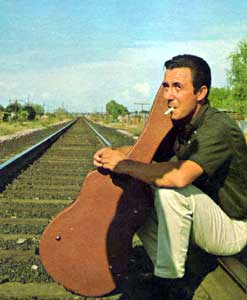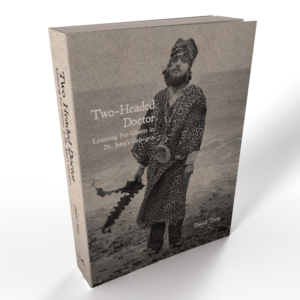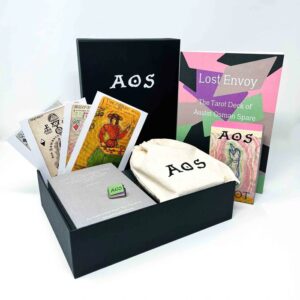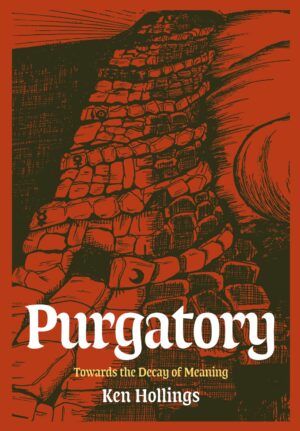Lee Hazlewood, Songwriter, singer and producer
The Independent 06 August 2007
Barton Lee Hazlewood, singer, songwriter and record producer: born Mannford, Oklahoma 9 July 1929; married 1953 Naomi Shackleford (one son, one daughter; marriage dissolved 1961), 1983 Tracy Stewart (one stepdaughter; marriage dissolved), 2006 Jeane Kelley; died Las Vegas 4 August 2007.
Lee Hazlewood was a maverick in the best sense of the word. He was fortunate to come into money early by writing and producing Duane Eddy’s hit records; after that, he wrote, produced and performed on a variety of projects, most stubbornly uncommercial. His best-known song is his transatlantic No 1 for Nancy Sinatra, “These Boots are Made for Walkin'” (1966), but there are scores of intriguing compositions which merit attention.
Hazlewood lived by his own rules and his career mirrors that of France’s musical auteur Serge Gainsbourg, who also wrote at length about sexual liaisons. “I write songs with double and triple meanings,” Hazlewood told me in 2004.
I could play certain of my songs to six- or eight-year-old children and they would just like them as songs. I could play the same songs to teenagers and they would know the reasoning behind them. Older people would say, “I think that’s dirty, Lee”, but they are not dirty songs: they’re just suggestive. I know that my songs are a little different and I would say that I am the best writer of Lee Hazlewood songs.
Barton Lee Hazlewood, born in Mannford, Oklahoma in 1929, was the son of an oilfield worker and the family moved to Arkansas and Texas. He met his future wife,Naomi Shackleford, at high school in Huntsville, Texas. Whilst in the services, he worked on military radio stations in Japan and Korea. As a result, he dropped his plans to study medicine and worked as a DJ in Arizona.
By 1955, he was starting a record label, Viv, to discover and produce local talent. The guitarist Al Casey led his studio band and, in 1956, they recorded “The Fool” with Sanford Clark. Hazlewood credited the song to his wife, under the name of Naomi Ford, in case the radio station noticed that he was playing his own records. “The Fool”, with its echo-drenched vocal and insidious guitar riff, is typical of Hazlewood’s work. It became a US Top Ten hit, and it has been recorded by many acts including Elvis Presley, Johnny Burnette and P.J. Proby.
In 1958, Hazlewood created a new sound for the Phoenix guitarist Duane Eddy. He encouraged him to use the bottom strings of his instrument and created a primitive but very effective echo using an empty grain tank outside the studio with a microphone and a speaker inside. “When I was in high school, there was a piano player I admired with slicked-back oily hair from New York called Eddy Duchin,” Hazlewood recalled,
and he played the melody way down there. I always thought that it would be nice if a guitarist did the same thing. When I first met Duane, I told him that I wanted to make a record with those low notes and he said, “I can do that.” I said, “I know you can: you’ll find it easy.” We sold 25 million records over four years, which wasn’t bad.
Duane Eddy and his group, the Rebels, had a hit single with “Rebel Rouser” (Hazlewood’s take on the word rabble-rouser) and followed it with several more including “Ramrod”, “Cannonball”, “40 Miles of Bad Road”, “Some Kinda Earthquake”, “Shazam!” and a radical reworking of Henry Mancini’s television theme “Peter Gunn”. In 1960, Hazlewood added strings for Eddy’s theme for the film Because They’re Young and in 1962 a vocal group for the insidious “(Dance with the) Guitar Man”.
Hazlewood’s deep-voiced gravitas was ideal for western themes and he released a half-spoken, half-sung concept album, Trouble is a Lonesome Town, in 1963. It was the first of many idiosyncratic projects, but he was also capable of writing conventional pop hits. Dean Martin scored with “Houston” (1964) and Martin’s son, Dino, as part of Dino, Desi and Billy, had US hits with Hazlewood’s songs, “I’m a Fool” and “Not the Lovin’ Kind”, both in 1966.
Frank Sinatra was keen for his daughter, Nancy, to have some pop success; indeed, her series of failures for his Reprise label was embarrassing. Hazlewood suggested she should sing in a lower register and asked Billy Strange to arrange a song for her he had written in 1963, “These Boots are Made for Walkin'”. With her go-go girl image, Sinatra had a transatlantic No 1 and she and her father had similar success with “Somethin’ Stupid” (1967), which Hazlewood co-produced with Jimmy Bowen.
Another of Nancy Sinatra’s big songs was “Sugar Town”. “I spent a lot of time writing that song,” Hazlewood revealed.
“I had written a pretty fair song but I thought it wouldn’t happen: the lyrics were too clever and so I rewrote and rewrote it and made it so dumb – you know, “I never had a dog that liked me some.” That’s a dumb lyric!
Although Reprise expressed their doubts, Hazlewood was confident that the song would be a success.
I said, “You stay on it for three or four weeks and you’ll know about it.” Nobody believed me. At the time Nancy had been selling 200,000 copies in the first week, but this one didn’t happen. It didn’t make 20,000. Next week: same again. The label manager, Mo Austin said, “This is your first bomb” but I said, “I think we’ve still got a hit.” About 10 days later, he called me and said, “My god, Lee, we’ve done 60,000 this week” and it went on to sell two million.
Even more remarkably, “Sugar Town” was about drugs: “I was in a folk club in LA which had two levels,” Hazlewood explained.
I could see these kids lining up sugar cubes and they had an eye-dropper and were putting something on them. I wasn’t a doper so I didn’t know what it was but I asked them. It was LSD and one of the kids said, “You know, it’s kinda Sugar Town.” Nancy knew what the song was about because I told her, but luckily Reprise didn’t.
Hazlewood had continued his own recording career with The Very Special World of Lee Hazlewood and Lee Hazlewoodism, Its Cause and Cure, both 1966. After falling out with MGM over Something Special (1968), he made a stunning solo album for Reprise, Love and Other Crimes, and teamed up with Nancy Sinatra for the album Nancy and Lee, which included their country hit, “Jackson”, as well as “Sand”, “Lady Bird” and the mesmeric “Some Velvet Morning”.
In 1967, Hazlewood started the LHI label and released Safe at Home by the International Submarine Band, produced by his sometime singing partner, Suzi Jane Hokom. The album is often cited as the start of country-rock, but the band could not promote it as they had by then broken up and their lead singer, Gram Parsons, had joined the Byrds. In a fit of mean-spiritedness, Hazlewood objected when Parsons violated their contract by singing lead on the Byrds’ album, Sweetheart of the Rodeo, so that Roger McGuinn had to replace Parsons’ vocals. Other releases on LHI included The Cowboy and The Lady (1969), an acclaimed album of duets by Hazlewood and Ann-Margret.
In 1970, Hazlewood moved to Stockholm and released an album and a television special, both called Cowboy in Sweden. The following year, he reunited with Nancy Sinatra for the hit duet “Did You Ever” as well as making a highly personal album, Requiem for an Almost Lady (1971). His 1973 album Poet, Fool or Bum, was reviewed by Charles Shaar Murray in the New Musical Express with just one word: “Bum”. Hazlewood’s 1977 album, Back on the Street Again, included his witty favourite, “Dolly Parton’s Guitar”.
Following a comeback tour with Nancy Sinatra in 1995, Hazlewood saw a growing demand for his work. Steve Shelley, the drummer with Sonic Youth, reissued many of Hazlewood’s albums on CD on his own label, Smells Like. A new album of standards with the Al Casey Combo followed, Farmisht, Flatulence, Origami, ARF!! and Me . . . (1999), which Hazlewood promoted at the Royal Festival Hall.
Another admirer, Wyndham Wallace, issued a new album, For Every Solution There’s a Problem (2002) on his City Slang label as well as a tribute CD, Total Lee! featuring alt country and new-wave performers including Lambchop, St Etienne, Tindersticks and Jarvis Cocker.
In 2004, Hazlewood appeared at the Royal Festival Hall for what was a farewell appearance. This was followed by Nancy and Lee 3 (2004) for which Duane Eddy helped create the cavernous sound on “She Won’t”. His final album, Cake or Death (2006), was as oddball as ever. He commented on the Iraq war in “Baghdad Knights” and discussed his demise in “T.O.M. (This Old Man)”.
“I’ve been around long enough now,” he concluded. “I’ve lived a pretty interesting life – not too much sadness, a lot of happiness, lots of fun. And I didn’t do much of anything I didn’t want to do.”
Spencer Leigh




